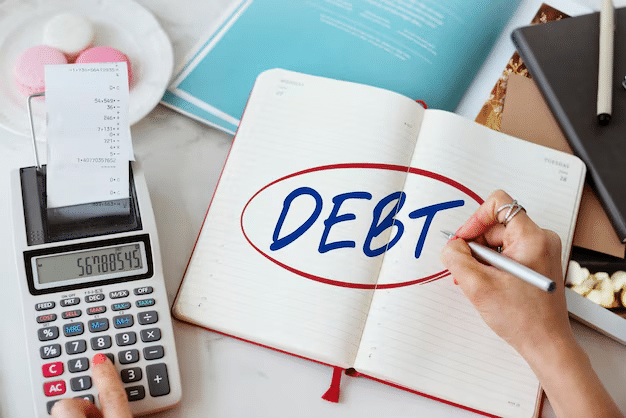Achieving financial freedom is a goal many aspire to, but it requires discipline, planning, and smart decision-making. One of the key elements to achieving financial freedom is creating and sticking to a budget. Budgeting is not just about cutting expenses—it’s about making informed decisions that help you manage your money, reduce financial stress, and work toward your long-term financial goals. In this guide, we’ll explore simple steps to budget your money effectively and set yourself on a path to financial freedom.
Why Is Budgeting Important?
Budgeting is the foundation of sound financial management. It allows you to track your income, control your spending, and plan for future expenses. A good budget helps you avoid overspending, build savings, pay off debt, and invest for the future. When you create and stick to a budget, you’re more likely to reach your financial goals—whether it’s saving for an emergency fund, buying a home, or retiring early.
Simple Steps to Budget Your Money
1. Track Your Income and Expenses
The first step in creating a budget is understanding how much money you’re bringing in and how much you’re spending. Start by calculating your monthly income after taxes. This includes your salary, side income, or any other sources of revenue.
Next, track your expenses. Break them into two categories:
- Fixed Expenses: These are regular, predictable payments, such as rent/mortgage, utilities, car payments, and insurance.
- Variable Expenses: These fluctuate month-to-month, like groceries, entertainment, dining out, and gas.
Tracking your spending for at least a month will give you a clear picture of where your money is going.
2. Set Financial Goals
Setting clear financial goals is crucial for motivation and focus. These goals should be specific, measurable, and realistic. Here are some examples of financial goals:
- Build an emergency fund of 3 to 6 months’ worth of living expenses.
- Pay off high-interest debt (credit cards, loans).
- Save for retirement or a down payment on a house.
Break these goals into short-term (within 1 year), medium-term (1-5 years), and long-term (5+ years) goals, and prioritize them based on urgency and importance.
3. Create Your Budget
Now that you have your income, expenses, and financial goals, it’s time to create your budget. The 50/30/20 rule is a simple and effective guideline for budgeting:
- 50% for Needs: This includes essentials like housing, utilities, transportation, and groceries.
- 30% for Wants: These are non-essential expenses, like entertainment, dining out, and shopping.
- 20% for Savings and Debt Repayment: Put 20% of your income toward savings, investments, or paying off debt.
You can adjust these percentages depending on your unique circumstances. For example, if you’re focusing on paying down debt, you might allocate more toward debt repayment and less toward “wants.”
4. Cut Unnecessary Expenses
Once you’ve identified your expenses, take a close look at your spending and see where you can cut back. Here are a few ideas:
- Eliminate subscriptions: Cancel any unused or unnecessary subscriptions, such as streaming services or gym memberships.
- Reduce dining out: Cooking at home can save you a significant amount of money over time.
- Limit impulse buys: Avoid spending on items you don’t need, especially in online shopping carts or during sales events.
By identifying areas to cut back, you can redirect that money toward savings or debt repayment.
5. Pay Off Debt

Debt can be a major roadblock to achieving financial freedom. Prioritize paying off high-interest debts first, such as credit card balances, before tackling other debts. One popular method for paying off debt is the debt snowball approach:
- Start by paying off your smallest debt first, and once it’s gone, move to the next smallest.
- Alternatively, the debt avalanche method focuses on paying off the debt with the highest interest rate first, which saves money in the long run.
Either method will help you gain momentum and eventually eliminate your debt.
6. Save for Emergencies
Building an emergency fund is one of the most important aspects of financial security. Aim to save 3 to 6 months’ worth of living expenses. This fund should be easily accessible in case of unexpected expenses, such as medical bills, car repairs, or job loss.
If saving this amount seems overwhelming, start small—contribute what you can, even if it’s $50 or $100 a month. Over time, your emergency fund will grow and provide peace of mind.
7. Invest for the Future
Once you’ve built an emergency fund and started paying off debt, consider investing for your future. Investments can help your money grow over time, making it a key component of long-term financial freedom. Here are some investment options:
- Retirement accounts (e.g., 401(k) or IRA)
- Stocks, bonds, and mutual funds
- Real estate
- Index funds
Start by contributing to tax-advantaged accounts like a 401(k), especially if your employer offers a match. The earlier you start investing, the more time your money has to grow.
8. Review and Adjust Your Budget Regularly
Budgeting is not a one-time task; it requires ongoing attention and adjustments. Regularly review your budget to ensure you’re staying on track with your goals. Life circumstances change—whether you get a raise, experience unexpected expenses, or change financial priorities—so it’s essential to adjust your budget accordingly.
Conclusion
Budgeting is a powerful tool for achieving financial freedom. By tracking your income and expenses, setting clear financial goals, and sticking to a budget, you can take control of your money and set yourself on a path to financial independence. Remember, budgeting isn’t about deprivation—it’s about making intentional decisions that allow you to prioritize your financial future. With time, patience, and consistent effort, you’ll be well on your way to achieving your financial goals and enjoying the peace of mind that comes with financial freedom.
FAQs
1. How do I create a budget if my income varies each month?
If your income fluctuates, track your income over several months and budget based on the average amount you earn. Prioritize your “needs” and adjust the “wants” and “savings” portions as needed.
2. How can I save more money each month?
Start by cutting out unnecessary expenses, such as subscriptions, dining out, or impulse buys. Consider setting up automatic transfers to your savings account to ensure consistent contributions.
3. What’s the best method for paying off debt?
Both the debt snowball and debt avalanche methods are effective. The best method depends on your personality—if you need motivation, start with the snowball method. If you want to save on interest, go with the avalanche method.
4. How much should I have in an emergency fund?
Aim for 3 to 6 months’ worth of living expenses in your emergency fund. If you’re just starting, aim for a smaller goal, such as $1,000, and build it over time.
5. Can I budget without using an app or software?
Yes! You can create a budget using pen and paper, spreadsheets, or a simple notebook. The key is tracking your income and expenses and sticking to your plan.


